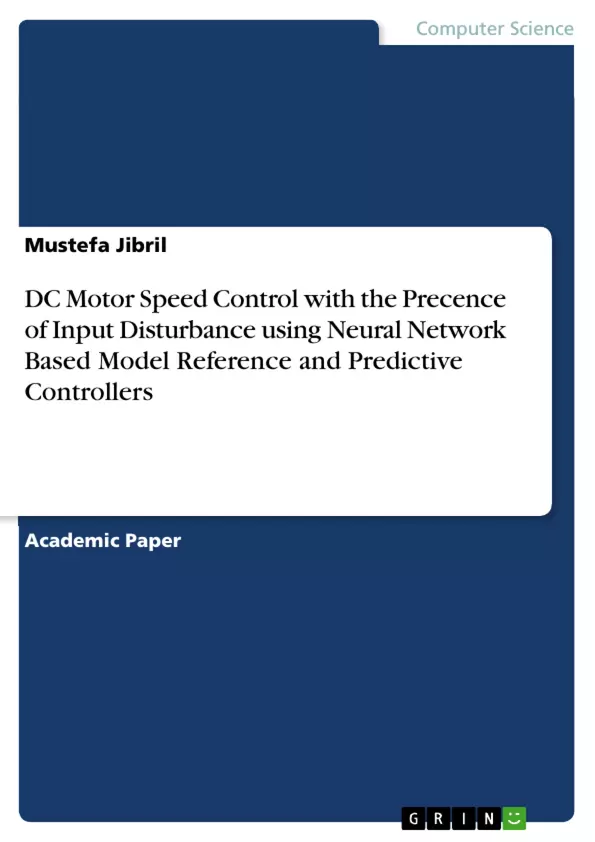In this paper we describe a technical system for DC motor speed control. The speed of DC motor is controlled using Neural Network Based Model Reference and Predictive controllers with the use of Matlab/Simulink. The analysis of the DC motor is done with and without input side Torque disturbance input and the simulation results obtained by comparing the desired and actual speed of the DC motor using random reference and sinusoidal speed inputs for the DC motor with Model Reference and Predictive controllers. The DC motor with Model Reference controller shows almost the actual speed is the same as the desired speed with a good performance than the DC motor with Predictive controller for the system with and without input side disturbance. Finally the comparative simulation result prove the effectiveness of the DC motor with Model Reference controller.
Inhaltsverzeichnis (Table of Contents)
- Introduction
- Mathimatical Model of DC Motor
- System structure of a DC motor
- The Proposed Controller Design
- Model-Reference Controller Design
- Block diagram of the model reference controller
- Predictive Controller Design
- Block diagram of the predictive controller
- Result and Discussion
- Comparison of DC motor with Model Reference and Predictive controllers without input disturbance
- Comparison of DC motor with Model Reference and Predictive controllers with input disturbance
- Conclusion
Zielsetzung und Themenschwerpunkte (Objectives and Key Themes)
This paper presents a comprehensive investigation into the speed control of a DC motor using Neural Network Based Model Reference and Predictive controllers. The primary objective is to analyze the performance of these controllers in both undisturbed and disturbed environments, evaluating their effectiveness in achieving precise and consistent speed control.
- Neural Network Based Model Reference and Predictive controllers for DC motor speed control
- Performance analysis with and without input side Torque disturbance
- Comparison of controller effectiveness in achieving desired motor speed
- Simulation results using Matlab/Simulink
- Evaluation of the effectiveness of the Model Reference controller for DC motor speed control
Zusammenfassung der Kapitel (Chapter Summaries)
- Introduction: This section introduces the concept of DC motor speed control and its applications in various industrial fields. It highlights the importance of achieving precise and stable speed control for optimal performance and safety in these applications.
- Mathimatical Model of DC Motor: This chapter provides a detailed mathematical description of the DC motor system, including its electrical and mechanical equations. It delves into the relationship between the armature current, back EMF voltage, and angular velocity, as well as the torque generated by the motor.
- The Proposed Controller Design: This section focuses on the design of two controllers: the Model Reference controller and the Predictive controller. It outlines the architecture of each controller and its implementation using neural networks.
- Result and Discussion: This chapter presents the simulation results obtained using Matlab/Simulink for the DC motor with both the Model Reference and Predictive controllers. It analyzes the system performance in scenarios with and without input side Torque disturbance, comparing the actual speed achieved with the desired speed.
Schlüsselwörter (Keywords)
The primary keywords and focus topics of this paper are: DC motor, neural network, Model Reference controller, Predictive controller, speed control, torque disturbance, simulation, Matlab/Simulink, performance analysis. The research focuses on evaluating the effectiveness of these controllers in achieving precise and reliable speed control of a DC motor, particularly in the presence of input disturbances.
- Quote paper
- Mustefa Jibril (Author), 2020, DC Motor Speed Control with the Precence of Input Disturbance using Neural Network Based Model Reference and Predictive Controllers, Munich, GRIN Verlag, https://www.grin.com/document/542040



